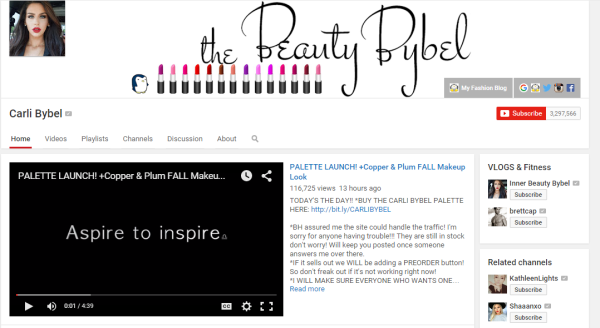Influencer Marketing
Marketing that uses an individual to influence target markets toward specific brands and products is not a new thing. We’re all used to athletes and celebrities endorsing brands in mass media. But social media has shifted power away from brands and elite celebrities and placed it in the hands of the masses. Now John Q. Public has his own plethora of channels to broadcast to thousands. This has created a shift for marketers and given rise to a practice know as influencer marketing.
Through the use of social media, major influencers have  emerged in just about every niche imaginable. Take the makeup industry for example. Makeup “vloggers” (video bloggers) are otherwise average gals that have amassed an audience on YouTube offering makeup how-tos and tips. There are dozens of outrageously popular beauty vloggers and brands are starting to find them. They operate in a niche with thousands of dedicated viewers who tend to feel a personal connection with the individual.
emerged in just about every niche imaginable. Take the makeup industry for example. Makeup “vloggers” (video bloggers) are otherwise average gals that have amassed an audience on YouTube offering makeup how-tos and tips. There are dozens of outrageously popular beauty vloggers and brands are starting to find them. They operate in a niche with thousands of dedicated viewers who tend to feel a personal connection with the individual.
The difference between influencer marketing and the traditional celebrity spokesman model is that these influencers are leveraged for their unique connection to their followers. The brand is promoted through the influencer’s channels (YouTube, Instagram, Twitter, etc.) and natural voice. When brands bring in a celebrity endorser, they’re typically given a script and the brand uses its own channels (traditionally mass media like TV). Using influencers can create a more authentic connection with customers on behalf of the brand. A good brand-influencer relationship allows that influencer to be an advocate for the brand in a way the brand could never do itself.
Brands large and small can use this method to target profitable niche markets like never before. Have you identified influencers for your brand?
Here are some helpful ways to get started:
1) Create a profile of your ideal influencer. This can include age, location, style, tone, how often they post, number of followers, engagement level and how they engage with followers.
2) This is the big part: start scouring social networks for people who fit your profile. It can be very labor intensive so consider using a service like InstaBrand for Instagram or BuzzSumo for other networks. Or, if you want to start browsing in a certain network, just use their search bar. Search relevant hashtags or specifics like “beauty blogger.”
3) Create a “short list” of potential influencers and monitor each for a determined period of time. Score them to ensure they fit with your profile, brand identity, target market and brand voice.
4) Select those you’d like to work with and reach out! Depending on the size of your brand and their network, you may be able to work directly. With those larger, use one of the services like InstaBrand, to connect and negotiate.
5) Work together to create a good strategy and content. And, as always, track, measure and adjust!





